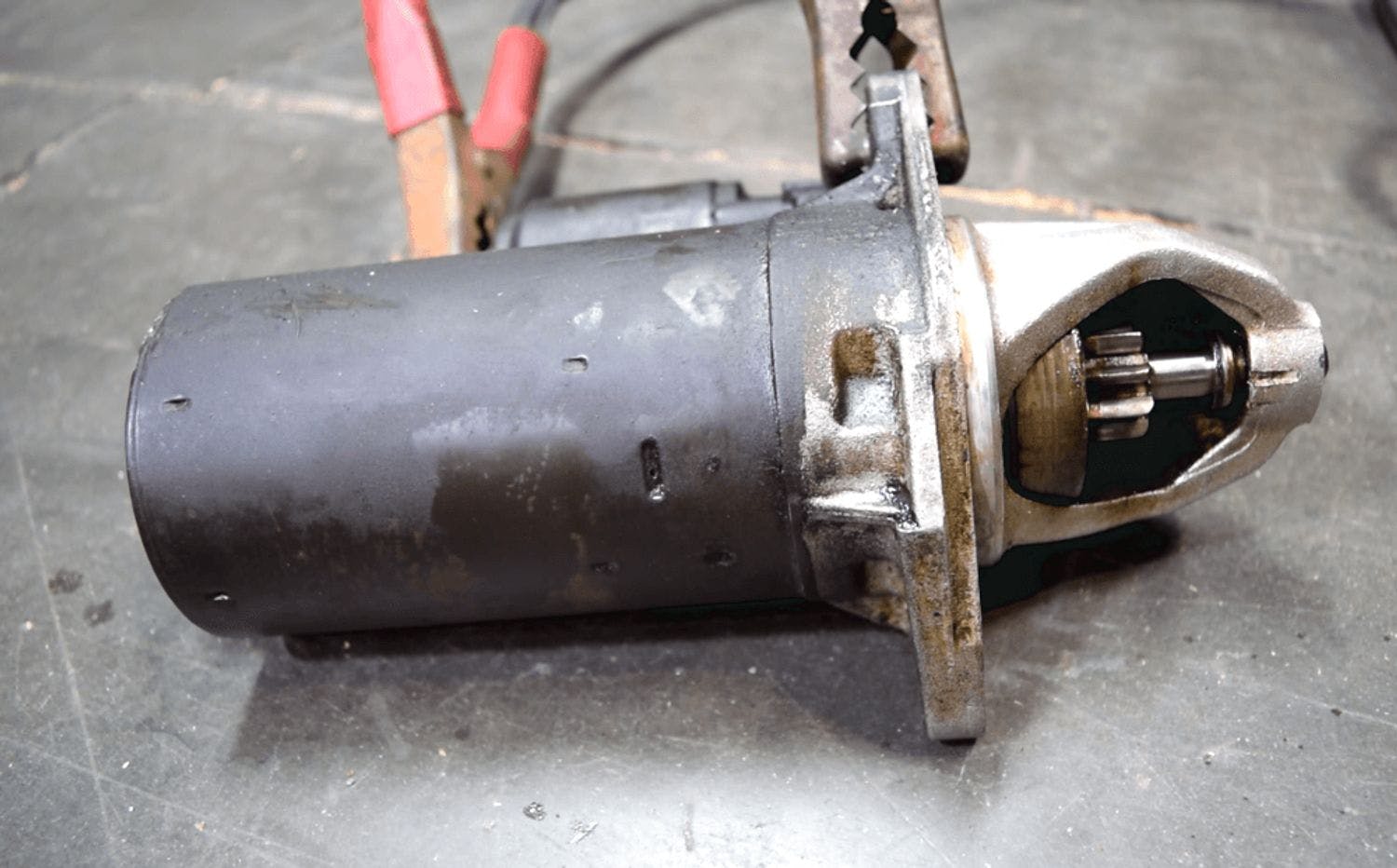Engine Starter: How it works, and how to maintain it?

The engine starter is a device with a primary function allowing the engine to start and run. It converts electrical energy into mechanical energy. A starter is needed by all engines that cannot generate torque on their own when starting.
In this article, we will shed light on the function of the starter, its construction, and its types. In addition, we will briefly look at what can cause a malfunctioning engine starter.
Inhaltsverzeichnis
Engine Starter Function
To start the engine, it is necessary to rev the engine. This speed, required to start the engine, is called the starting speed and varies by engine type:
40 to 150 RPM for petrol engines and diesel engines with direct fuel injection
80 to 200 RPM for diesel engines with indirect fuel injection
The RPM, in this case, does not reference the revs of the starter but the revolutions of the flywheel of the engine, which is spun by the starter.
How Does the Engine Starter Work?
When starting the engine, a small gear called a pinion is pushed out of the starter, which engages with its teeth in the teeth of the flywheel, and then the electric motor of the starter is turned on - it spins the engine.
When the key is released, the pinion returns to its original position, breaking the mechanical connection between the starter and the flywheel while also turning off the electric motor.

Flywheel: What effect does it have on engine operation?
If the starter pinion did not return to its original position, its high revolutions would damage the starter and the engine flywheel.
Components of an Engine Starter
Engine starters consist of various components, including:
Starter Motor: Provides the rotational force needed to start the engine.
Solenoid: Acts as a switch, connecting the starter motor to the battery when activated.
Pinion: Engages with the flywheel or flexplate to turn the engine.
Housing: Protects the internal components of the starter.
Types of Engine Starters
Engine starters come in various types, each catering to specific requirements and applications. Here are some of the most common types:
Direct Drive Starters
Direct drive starters, also known as inertia starters, are an older and simpler design. They use a gear reduction mechanism to generate the torque needed to start the engine. These starters are generally found in older vehicles and are not as efficient as their modern counterparts.
Gear Reduction Starters
Gear reduction starters are an improvement over direct drive starters, providing more torque for a given motor size. Using a planetary gear system, these starters can produce higher torque with less power consumption. They are commonly found in modern vehicles.
Permanent Magnet Starters
Permanent magnet starters use permanent magnets instead of field coils to generate the magnetic field required for the motor to operate. This design reduces the overall weight and size of the starter, making it more efficient and reliable. They are often used in smaller engines and motorcycles.
Integrated Starter-Generators (ISG)
Integrated starter-generators combine the functions of a starter and an alternator into a single unit. They are used in hybrid and start-stop systems to provide seamless transitions between engine modes. This design reduces the overall weight and complexity of the car's electrical system.
Engine Starter Requirements
It must withstand approximately 50 thousand starts
If the car is equipped with a start-stop system, the lifetime of the starter is approximately 200 thousand starts
It must be able to spin the engine up to a minimum temperature of -30 degrees Celsius
Maintenance-free during its lifetime
It must be protected from overloading when starting the combustion engine
Troubleshooting Engine Starter Issues
Engine starter issues can manifest in various ways, but there are some common symptoms to look out for:
No engine cranking: If the engine fails to crank when the ignition key is turned, it may indicate an issue with the starter motor, solenoid, or electrical connections.
Grinding noise: A grinding noise during engine startup could signify a problem with the starter's drive gear or flywheel teeth.
Intermittent starting: If the engine starts intermittently, it might be due to a faulty solenoid, poor electrical connections, or a failing starter motor.
Engine Start Malfunction
If the engine starter spins idle, it may mean a faulty freewheel or broken teeth of the toothed rim of the flywheel or pinion. If the starter does not spin, it is usually a faulty ignition coil or a bad contact.
The engine starter has a large energy consumption, so the car battery can be discharged during frequent starts and short drives, even if the car is well-maintained and free of malfunctions. One engine start should not take more than 5 seconds. If the engine fails to start the first time, you should repeat the start 3 to 5 times with a 30-second pause between starts.
However, if you cannot start the car even after these attempts, you should open the hood and start looking for the problem. There can be several of them. If the starter is fine, you should, first of all, focus on the car battery, which, if it is discharged, cannot supply a sufficient amount of energy to the starter's electric motor.
Another frequent cause, especially in winter, can be a frozen fuel filter or clogged with paraffin flakes. In this case, the fuel does not get into the engine's combustion chamber, and you can rev the engine as long as you want without success.
Conclusion
The engine starter is a vital component that kickstarts the engine. Your car won't be able to start and run without it. By understanding how the engine starter works and what malfunctions can occur, you might be able to prevent or solve them without a hassle.